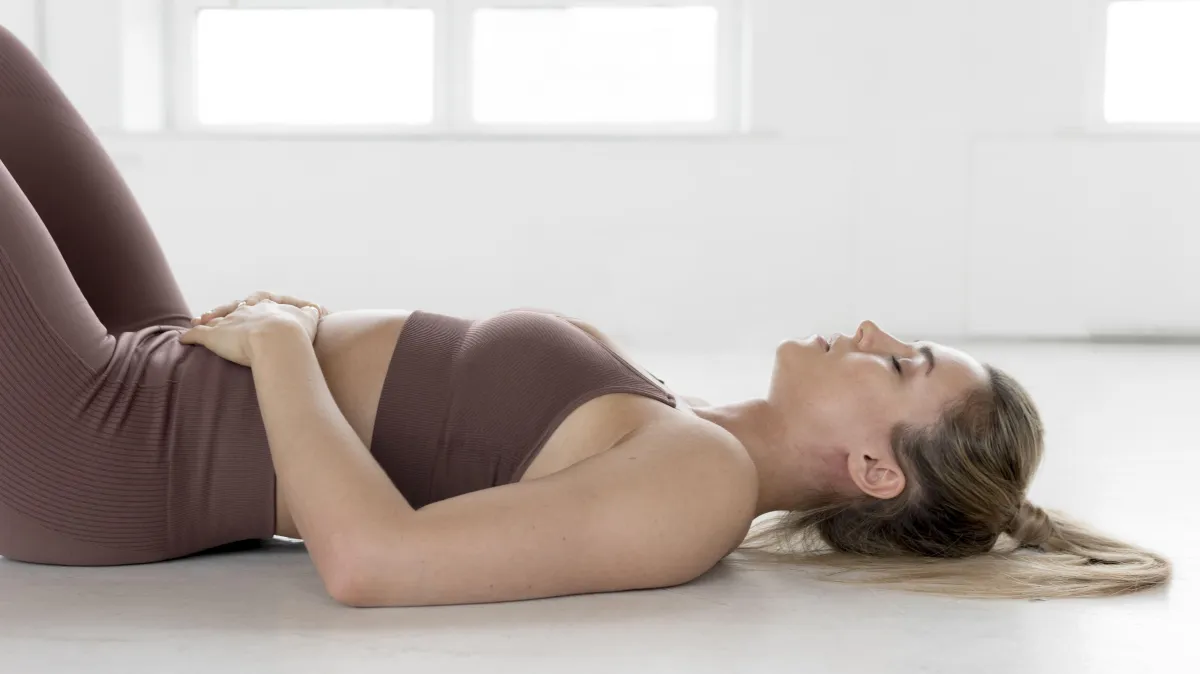Abdominal Separation Physical Therapy in NYC
Manhattan Physical Therapy

What Is Diastasis Recti (DR)?
Diastasis Recti, often called DR or diastasis rectus abdominis, is a condition where the rectus abdominis muscles—the pair of “six-pack” muscles—separate due to a thinning or stretching of the connective tissue between them. This separation typically occurs along the linea alba, the midline of the abdomen that holds the muscles together.
While it’s most common during and after pregnancy, anyone can experience DR. The growing baby puts pressure on the abdominal wall during pregnancy, stretching the connective tissue and weakening the core muscles. However, men and non-pregnant women can also develop diastasis recti due to factors such as excess abdominal pressure, obesity, or improper exercise techniques.
What Causes Diastasis Recti?
Diastasis recti develops when pressure inside the abdomen causes the connective tissue between the rectus abdominis muscles to stretch and separate. Several factors can contribute to this condition, including:
Pregnancy: The most common cause, as a growing fetus increases intra-abdominal pressure. Studies suggest that up to 66–100% of women experience some degree of DR in their third trimester. Women carrying multiples or those with smaller frames are at higher risk.
Abdominal Obesity: Rapid or significant weight gain can overstretch the abdominal wall, leading to separation.
Newborns: Some infants may be born with DR, but in most cases, it resolves naturally as their muscles strengthen.
Improper Exercise or Heavy Lifting: Performing strenuous core or weightlifting exercises without proper technique can strain the abdominal wall and worsen separation.
What Are the Common Symptoms of Diastasis Recti?
Many people with diastasis recti don’t realize they have it until they notice a visible bulge or “pooch” along the midline of the abdomen, especially when doing activities that engage the core—like sitting up, coughing, or lifting.
Other common symptoms include:
A soft or jelly-like feeling around the belly button
A noticeable doming or coning effect when tensing the abs
Weakness in the abdominal muscles
Low back pain or pelvic discomfort
Hip pain or instability
Postural changes due to poor core support
Difficulty lifting, walking, or performing daily activities
Urinary leakage (incontinence) in some cases
Risk Factors for Diastasis Recti
Certain factors can make you more likely to develop diastasis recti, including:
Having less than a year between pregnancies
Being age 35 or older
Carrying multiple babies (twins, triplets, etc.)
Delivering a large or heavy baby
Having a smaller or petite body frame
Intense or prolonged pushing during vaginal childbirth
How Is Diastasis Recti Diagnosed?
Diagnosing diastasis recti is usually straightforward. During your visit at Manhattan Physical Therapy, a licensed physical therapist will perform a gentle palpation test—using their hands to feel along the midline of your abdomen—to assess the width and depth of the separation. You may be asked to slightly lift your head or engage your core to make the muscle gap more visible.
Your therapist will also take a detailed medical and lifestyle history, including pregnancy background, onset of symptoms, and activities that worsen or improve your discomfort.
In some cases, if a deeper assessment is needed, imaging such as ultrasound or CT scans may be recommended to measure the extent of muscle separation and ensure an accurate diagnosis.
How Can Physical Therapy Help Treat Diastasis Recti?
For many people, diastasis recti can gradually improve with time—especially after pregnancy or weight loss. However, when the separation doesn’t resolve naturally, physical therapy can play a crucial role in recovery. At Manhattan Physical Therapy, our treatment approach focuses on rebuilding core strength, improving stability, and helping you return to your normal activities safely.
Here’s how physical therapy can help manage and correct diastasis recti:
1. Core Strengthening Exercises
Your physical therapist will design a targeted exercise plan that strengthens the deep abdominal muscles, such as the transverse abdominis, without placing additional strain on the linea alba. These exercises help bring the rectus abdominis muscles back toward the midline while improving overall core stability.
In addition, strengthening surrounding areas like the hips, diaphragm, and lower back supports better posture and balance, reducing the risk of further separation or pain.
2. Movement Education
Daily activities—like getting out of bed, lifting a child, or even sneezing—can aggravate DR if done incorrectly. Your therapist will teach you body mechanics and posture techniques that minimize pressure on your abdomen. Learning how to move safely helps prevent worsening the gap and supports long-term healing.
3. Abdominal Bracing and Support
In some cases, using an abdominal brace or support garment can provide gentle compression and stability during your recovery. Your therapist can help you find a brace that fits comfortably and supports your abdominal wall as you strengthen your muscles.
4. Neuromuscular Electrical Stimulation (NMES)
At Manhattan Physical Therapy, we may use NMES technology to enhance muscle activation. This non-invasive technique sends mild electrical impulses to your abdominal muscles, helping them contract more effectively. When combined with targeted exercises, NMES can accelerate muscle re-education and improve abdominal strength faster than exercise alone.
Call us today at (212)-213-3480 to schedule your personalized consultation and start your recovery journey with trusted professionals in NYC.
What others are saying
Alexander Liu
"Everyone on the team at Manhattan Physical Therapy is super nice and caring. They were able to pretty quickly diagnose my knee and hip problems and immediately put me to work to reduce the pain.."
Henry Myerberg
"You're not just a patient when you come to the Manhattan Physical Therapy. You feel like family there. In particular, Erica with her colleagues John, Lidia and Joe not only fix and improve you physically, they make you feel welcomed and cared for.."
Hakyung Kim
"Everyone is so kind and helpful! my knee and hip pain have improved massively since starting Manhattan PT, highly recommend to anyone. special thanks to Bianca, Lidia, Joe, and John!"
Manhattan Physical Therapy
✆ Phone (appointments):
(212) 213-3480
Address: 385 5th Ave, Suite 503, New York, NY 10016

